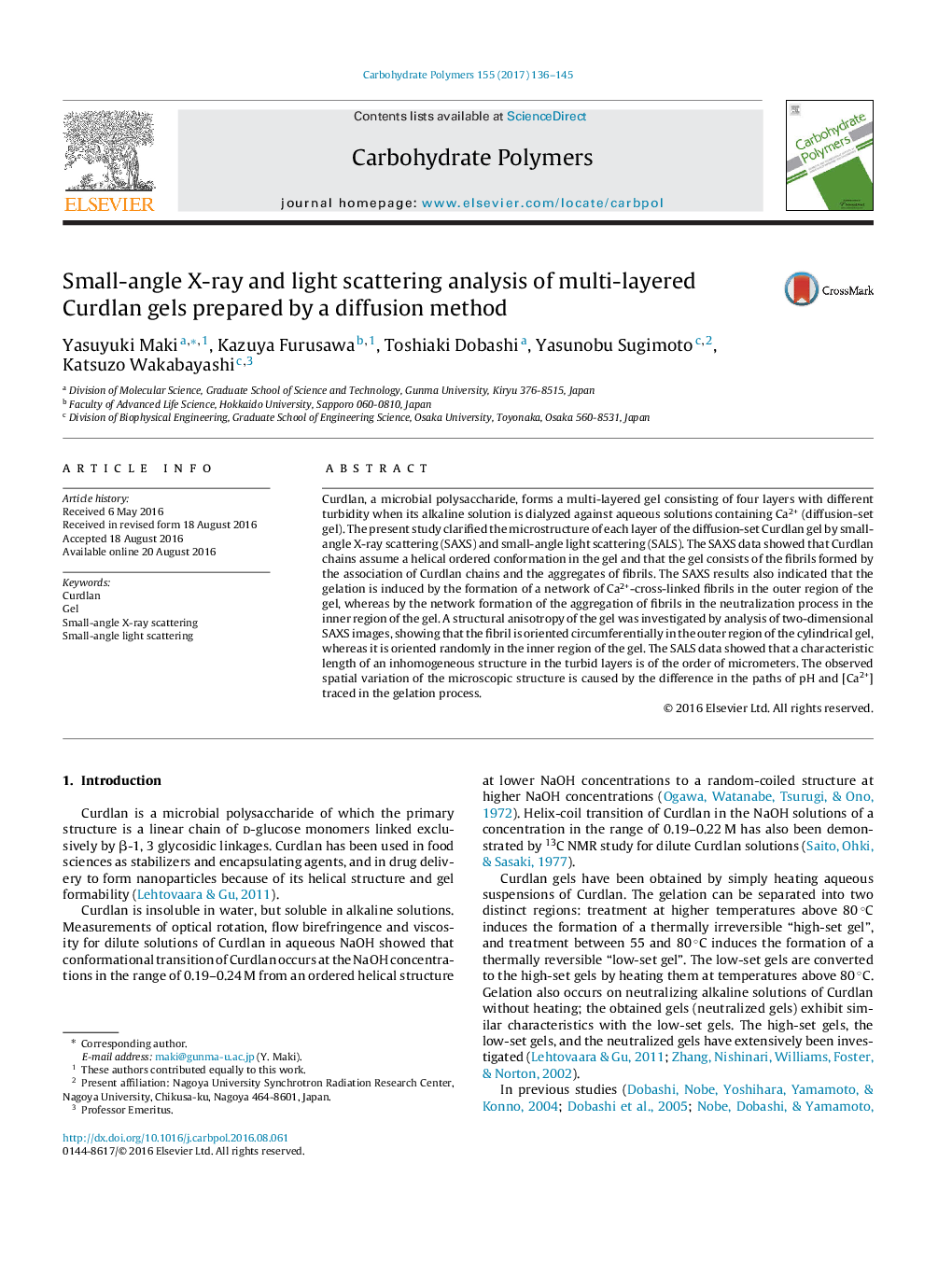| Article ID | Journal | Published Year | Pages | File Type |
|---|---|---|---|---|
| 1384575 | Carbohydrate Polymers | 2017 | 10 Pages |
Abstract
Curdlan, a microbial polysaccharide, forms a multi-layered gel consisting of four layers with different turbidity when its alkaline solution is dialyzed against aqueous solutions containing Ca2+ (diffusion-set gel). The present study clarified the microstructure of each layer of the diffusion-set Curdlan gel by small-angle X-ray scattering (SAXS) and small-angle light scattering (SALS). The SAXS data showed that Curdlan chains assume a helical ordered conformation in the gel and that the gel consists of the fibrils formed by the association of Curdlan chains and the aggregates of fibrils. The SAXS results also indicated that the gelation is induced by the formation of a network of Ca2+-cross-linked fibrils in the outer region of the gel, whereas by the network formation of the aggregation of fibrils in the neutralization process in the inner region of the gel. A structural anisotropy of the gel was investigated by analysis of two-dimensional SAXS images, showing that the fibril is oriented circumferentially in the outer region of the cylindrical gel, whereas it is oriented randomly in the inner region of the gel. The SALS data showed that a characteristic length of an inhomogeneous structure in the turbid layers is of the order of micrometers. The observed spatial variation of the microscopic structure is caused by the difference in the paths of pH and [Ca2+] traced in the gelation process.
Related Topics
Physical Sciences and Engineering
Chemistry
Organic Chemistry
Authors
Yasuyuki Maki, Kazuya Furusawa, Toshiaki Dobashi, Yasunobu Sugimoto, Katsuzo Wakabayashi,
